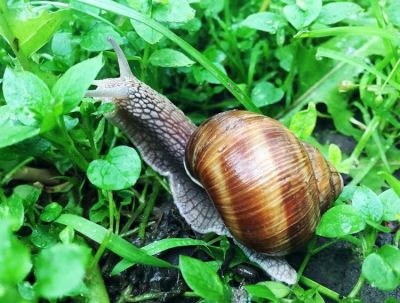 Why Snails and Slugs Are a Threat
Why Snails and Slugs Are a Threat
Snails and slugs are far more than just garden nuisances; they are part of the mollusk family, known for their ravenous appetites that can quickly destroy young plants and delicate leaves. Out of around 50 introduced mollusk species in Australia, about 10 have become significant pests, damaging a wide range of plants, including vegetables, flowers, and ornamentals. Managing snails and slugs are very essential.
During cool and damp conditions, snails and slugs thrive. They primarily feed at night, but extended rainy periods can lead to daytime activity as well. When they feed, they leave irregular holes, particularly if they’re older, and young snails can even leave skeletonized leaves. Snail droppings and slimy trails are also common signs. Slugs are particularly aggressive, able to consume their entire body weight in just one day, which makes their presence a serious risk to plant growth.
Pest Concerns and Disease Spread
In other parts of the world, snails and slugs have been identified as carriers of tobacco mosaic virus and various fungal diseases, such as Phytophthora, Fusarium, and rusts, that harm plants. In Australia and New Zealand, spring rains can lead to increased snail and slug activity, requiring horticulturists to remain vigilant to protect their gardens.
Snails and slugs reproduce rapidly, and as hermaphrodites, they lay eggs that can remain dormant for years, especially some snail species that can survive up to three years in a hibernation state. While slugs do not hibernate, they thrive in wet weather. Maturity can take one to two years, and they can live several years, depending on the species.
EFFECTIVE STRATEGIES FOR SNAIL AND SLUG MANAGEMENT
Managing these pests involves both preventive measures and targeted control methods. Here are some effective approaches:
CULTURAL CONTROLS FOR PREVENTION
Maintaining clean garden spaces is essential. Removing debris, fallen leaves, and mulch can significantly reduce the habitats where snails and slugs hide and breed. Keeping pathways and planting areas dry also helps deter their presence. Good irrigation management is crucial; using drip systems instead of sprinklers reduces excess moisture that attracts these pests. Water plants early in the day to give soil time to dry by evening, and regularly monitor for activity, particularly after 10 p.m. on mild nights. Traps and baits can also help assess the pest population.
CHEMICAL CONTROL SOLUTIONS
When managing snail and slug populations, chemical controls may be necessary to curb their spread. Products like SlugOut, Blitzem, and Metarex are highly effective when combined with good cultural practices. For best results, apply baits near the base of vulnerable plants or areas known to have high snail and slug activity. These products attract snails and slugs away from plants, offering rapid protection.
At Garden City Plastics, we offer reliable snail and slug control solutions:
Metarex: A high-strength metaldehyde bait, effective on snails and slugs. Known for its rain resistance, it’s ideal for larger garden areas.
SlugOut: Also a metaldehyde-based product, offering lasting protection.
Blitzem: A lower-strength metaldehyde bait that quickly targets snails and slugs, with added bittering agents to discourage pets from consuming it.
ORGANIC MOLLUSCICIDE OPTIONS
For gardeners looking for eco-friendly options, organic molluscicides offer a safe alternative that effectively controls snails and slugs without harming beneficial insects or pets. Eco-Shield, for example, is an iron-based bait that disrupts feeding and reproductive cycles of snails and slugs. When pests come into contact with this organic formulation, they stop feeding and retreat to die, adding iron back into the soil safely.
Other organic repellents include:
Copper-Based Products: Buffered copper or copper sulfate solutions create barriers to repel certain snail and slug species.
Garlic Oils and Extracts: These create snail-proof zones around paths and garden beds. While effective, certain garlic formulations may not be suitable for edible plants intended for immediate consumption.
TIPS FOR EFFECTIVE BAIT APPLICATION
To maximize molluscicide effectiveness, proper bait placement is key. Apply baits in the evening after watering, as moist soil draws snails and slugs out from hiding. Spread the bait evenly over larger areas, keeping it slightly away from young plants to avoid any potential harm. Reapply after heavy rains or frequent irrigation to maintain effective control.
source:https://gardencityplastics.com/spring-snail-slug-management-guide-horticulturists



